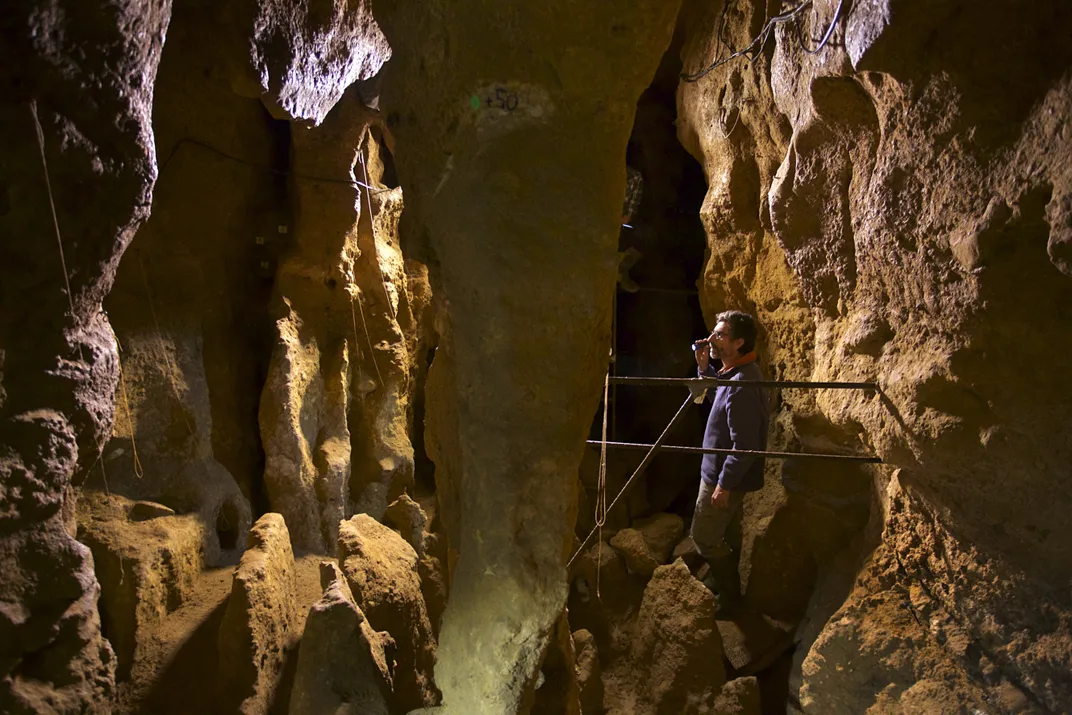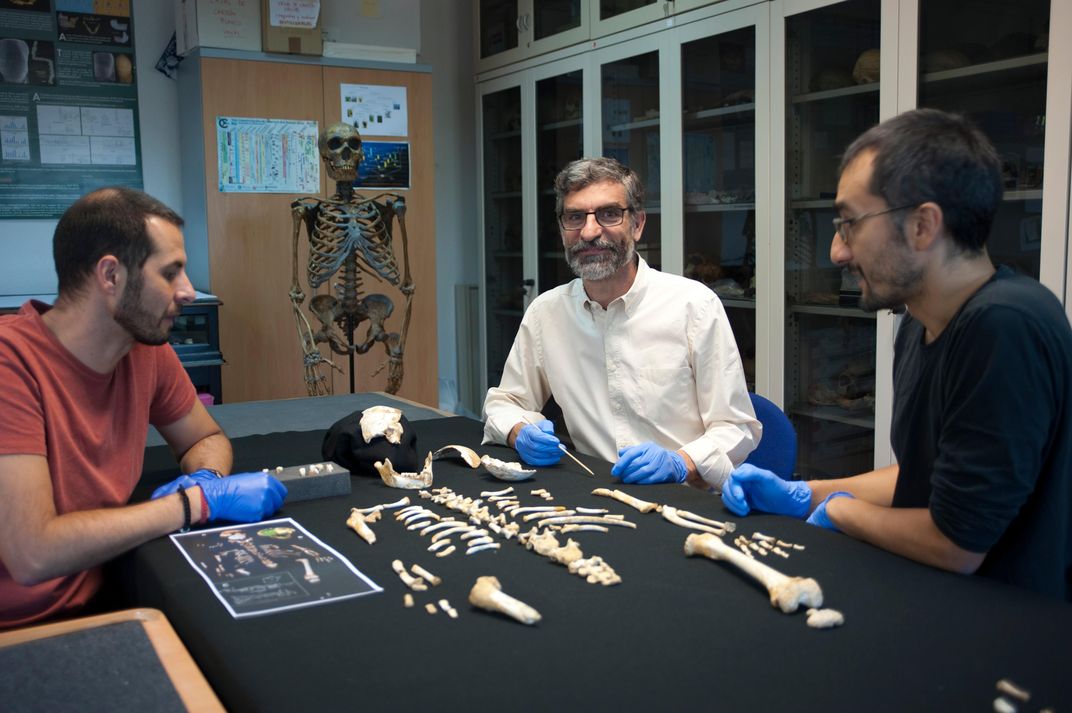Modern Humans and Neanderthals May Be More Similar Than We Imagined
A remarkably preserved 49,000-year-old skeleton shows that Neanderthal kids may have grown slowly, like us
:focal(1290x1405:1291x1406)/https://tf-cmsv2-smithsonianmag-media.s3.amazonaws.com/filer/81/f8/81f8e496-7fae-4005-aa66-840a25650061/neanderthal1.jpg)
When the skull of the child was first discovered, it raised more questions than answers. Although it was nearly 50,000 years old, unearthed deep within the Sidrón limestone caves of Asturias, Spain, it could easily be mistaken for that of a modern-day youth. The archaeologists who later examined it wanted to know: What was the story of this young Neanderthal? And how similar was he to today’s young Homo sapiens?
As the skeleton’s additional bones began coming to light one by one, the picture came into focus. “When the first remains of the juvenile skeleton started to appear,” says Luis Rios, a paleontologist at Madrid’s Museo Nacional de Ciencias Naturales and a coauthor on a just-published study in the journal Science, “we realized that it was a very interesting skeleton.”
The reason the skeleton was so compelling to researchers was twofold. First, as a child skeleton, the specimen offered a window into how Neanderthals grew and developed into adults, which researchers could then compare against modern Homo sapiens. Second, the unusually pristine condition of the jawbone and teeth made it possible to draw a precise estimate of the juvenile’s age at the time of death.
“Dental development is very important in human evolution and in primates,” said Antonio Rosas, the museum’s chair of paleoanthropology and lead author on the study, during a press conference on Wednesday. “And also in establishing the chronological age—that is, the age of the individual in years or days and months, or in an absolute time.”
Through an analysis of naturally occurring markings on the juvenile’s first left upper molar, Rosas and his coauthors concluded that the child had almost certainly died between the ages of 7.61 and 7.78 years. While DNA testing was inconclusive, canine tooth size and general bone robustness indicate that he was also male. Further findings, Rosas says, suggest that humans may not be as distinct from Neanderthals as we often tell ourselves—with two key exceptions.

It was over 23 years ago that a band of spelunkers in northern Spain chanced upon a cache of Neanderthal skeletons, 13 in all, in a part of the Sidrón cave complex now known as the Galería del Osario: the Tunnel of Bones. Comprising several adult males, several adolescent males, several adult females and several infants, the 49,000-year-old collection whetted the appetites of evolutionary scientists worldwide. By now, 2,500 distinct bones have been unearthed in the region—an incredible windfall for the international scientific community.
As more and more of the child’s skeleton was unearthed, the fullness of the skeleton became apparent to Rosas and his team. Ultimately, Rios says, “we were able to approach bone maturation besides dental maturation. The initial motivation for the work was the study of growth and maturation, but we kept adding more and more pieces, until the excavation finished and we had a very complete Neanderthal skeleton.”
The team performed a full examination of the skeleton in order to contrast the stages of growth in the Neanderthal child with the equivalent stages of growth in Homo sapiens. What they found was that the Neanderthal was nearly indistinguishable from Homo sapiens in the degree to which its bones had developed. From hands to knees, says Rosas, “the general pattern of growth is very similar to that of modern humans.”
However, his team did observe two important points of divergence—which could lend insight into how Neanderthals developed and aged. The first was in the spinal column. CT scans of the Neanderthal’s spine revealed that certain vertebrae in the boy’s backbone had not yet fused; those of a modern human child would have fused by age 5 or 6.
Second, inspection of the cranium—which houses the brain—implied that brain development in Neanderthals may have been a slightly more protracted process than in Homo sapiens. The endocranial volume of the specimen was about 87.5 percent of the average adult Neanderthal’s, the team reports. By contrast, for a modern 7-year-old human, the brain is typically 95 percent of the way to its adult size.

While the findings are intriguing, results that rely on a single specimen should be taken with a very large grain of salt, says University of Zurich paleoanthropologist Christoph Zollikofer. Comparing this Neanderthal’s brain size against the adult average for the whole of the Neanderthal species—as opposed to its own adult brain size, which we can never know since it died as a juvenile—is bound to result in shaky conclusions.
It could well be the case that this specimen “is just a normal kid with normal [Homo sapiens-like] brain growth,” Zollikofer says.
Rosas acknowledges the limitations inherent in this kind of study. “It’s a problem that pervades the fossil record, that sometimes conclusions rely on few individuals,” he says. Nevertheless, he maintains that such work is essential to the slow but steady progress of evolutionary research. In future years, he says, “we will try to incorporate other fossils, and later juvenile stages,” to help round out the picture.
For now, Rosas views this research as one more step along the path toward a fuller understanding of humanity’s rich evolutionary history. “We thought that our way of growing was unique to our species,” he says. Turns out, we Homo sapiens may be a lot closer to our past than any of us bargained for.
/https://tf-cmsv2-smithsonianmag-media.s3.amazonaws.com/accounts/headshot/DSC_02399_copy.jpg)
/https://tf-cmsv2-smithsonianmag-media.s3.amazonaws.com/accounts/headshot/DSC_02399_copy.jpg)